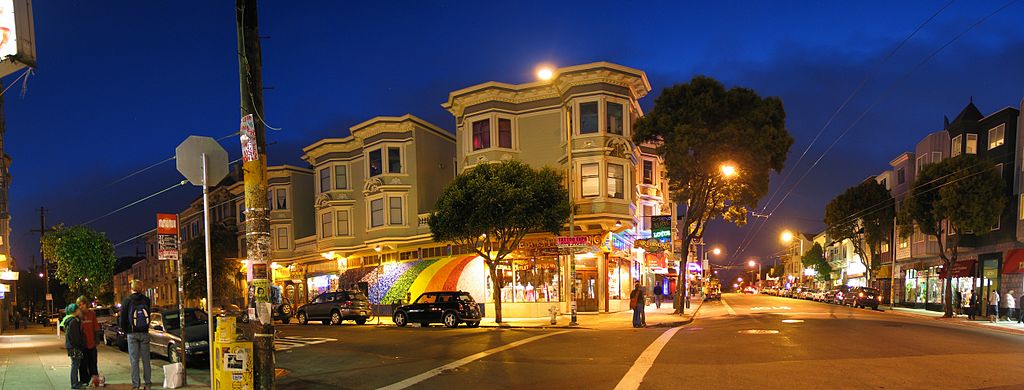When I started to run commute, I also started to wear a uniform. I acquired enough of the same shirt and pants — and even, importantly for the task, shoes — to wear for a week, requiring only that I rotate through them, changing t-shirt and underwear and socks (though I’m in the process of switching to identical t-shirts and underwear, too). I am lucky. I happen to hold a job, as a professor, that allows me to pursue this consistency without worry that I will be shunned. I am risking a bit of spousal disapproval and mockery from students, both of which are inevitable anyway. The benefits outweigh the costs. This is who I am.
I would not have attempted such an endeavor at an earlier age. I used to be ambitious in a conventional sense. That means I had people to impress. I had to mature into myself.
The credulous believe fashion catalogs that promise the right look ensures the happy life. You try to assimilate. As a kid, I remember begging my immigrant parents for the same sneakers and the same blue jeans that the neighbor kids had, the suburban aesthetic, which made them cool and which I was compelled to copy. My brothers and I would not be accepted in our hand-me-downs brought annually from the cousins and home sewn polyester courtesy of our mother. I came of age during the preppy handbook era, which proposed we embrace the fads of East Coast WASPs who were proud of the privilege symbolized by polo shirts. I wore penny loafers for too long, slouching and shuffling along, until I developed plantar fasciitis, only to receive the recommendation that I alter my footwear choice as a cure, which worked to my great relief. As a lawyer earlier in my career, I still had to imitate those at ease in business attire. Casual Fridays were introduced then, and the standard was anything but casual, because there was a secret code established by social superiors of how to relax properly. Henry David Thoreau offered the advice not to undertake any occupation that involved a new set of clothes. He was a frugal fellow and a wise one as well.
Nowadays, I am ambitious in a better sense. I am content with my station in life. My current goals are along the lines of better form as a runner, a faster pace, and greater stamina. I would like to be a decent human being. That includes humility.
For this new phase in the cycle of the universe, my costume is black. I dated a woman once who insisted that all shoes had to be hair colored. When I met her husband, I glanced down at his feet immediately. An astute man, he said, “Yes, yes, I know. Hair and shoes should match.”
Whether that admonition is the origin of the style, my top is lightweight black merino wool or cotton, a pullover, a turtleneck if it is especially chilly. I favored Ibex, which went bankrupt, and I switched to Icebreaker. The pants are black, Underarmour, which can be worn during the run and then for the rest of the day. The belt is black webbing, as plain as possible. The shoes are black leather pull-on, the type with stretchy side panels. They were a bargain, so I stocked up. These are carried in an ultra-lightweight backpack. (Some days, the shoes are black Hoka One Ones, eliminating the need to swap out footwear to a dress alternative). If I must don a collar, I have no-iron black dress shirts bought in bulk at a discount. The underwear is technical fabric, or, based on research, bamboo. The t-shirts are Amazon Basics, v-neck in black, so I don’t have bits of white t-shirt visible underneath a black shirt, as if I remained a geek unaware that this violated norms — I guess I am a conformist to that extent.
The running wardrobe emphasizes high-viz yellow for safety’s sake. That includes a cap and a jacket.
There is a philosophy to the practice. I have no desire to put on a necktie, nor advertise a corporation by displaying its logo. An organized life becomes convenient. I fold my clothes when they come out of the laundry, stacking everything so I can grab the next iteration from a series. A side effect is efficiency while traveling. I waste neither time considering what to pack nor space on extra items.
I am not embarrassed that I am a creature of habit. I follow the same route on my run commute. I vary a bit, more due to traffic patterns than for the change of scenery. But even the same route is not the same daily — if you become attentive to subtlety, which I would like to, there is the passage of the seasons and the new goings-on in the neighborhoods through which you pass. When I do something different, it is still within a range of options that have become familiar: I turn left a street earlier or later, or, if I want an adventure I head through historic Haight-Ashbury, home of the “Summer of Love” (1967), the year I was born, albeit in the much more conventional Midwest.
There is much to be said for habit. I have realized that, even if I may be rationalizing. My wife and I are homebodies. When we eat out, we have a few places where we are regulars. At the sushi joint down the street, I study the menu, but I have always, without exception, ordered the same dishes: the mentai oroshi (cod roe on grated radish) and the sashimi moriawase (the raw fish daily special). All that changes is the drink, based on the weather: sake, hot or cold; or beer. The husband and wife proprietors recognize us. They laugh with us, a private but shared joke, as we study the board showing specials, then recite what they have heard us say before many a time, because our dining there is a ritual.
There are others who have followed the same regimen. They save themselves the trouble of a decision each morning. Efficiency commends itself. Albert Einstein is reputed to have done it, but I have doubts about whether that is apocryphal. The late Steve Jobs appears to have followed the discipline. Gilligan and the rest of the castaways on the island in the eponymous television sitcom, like the Star Trek crew (pity the redshirts) and other fictitious figures who have fan followings, possess limited wardrobes, although of course their story explains the constraints of the situations: for Gilligan, the Skipper, and their guests, other than coconuts, there wasn’t much they could add to their closets since they had planned on only a three hour tour. They become so easily identified they qualify as iconic. John Wick comes out of retirement with a white shirt and a black shirt. But he never removes the bulletproof suit jacket (“tactical”). There is a gender aspect to the method of course, to the advantage of males and the disadvantage of females, as is typical of gender inequities. It likely is easier for men to repeat the same outfit incessantly without social stigma, and even those who are not trying to do so can duplicate suit, shirt, and tie without others noticing much less objecting. There is no reason a woman could not adopt this system.
For me, the run commute and the uniform are related. They started simultaneously. I have more important matters to consider than what covers my body. Among the subjects to contemplate productively are the transcendent aspects of the urban hike outside my door before dawn. Beyond that, my run commute and uniform are about the cultivation of control over one’s self, about establishing character through specific actions, deliberately, mindfully. I want to be my own person. Ironically, every individual aspires to the same. But I am confident that only a few will follow through: wake up early, venture forth in the dark despite cold and rain, clean up at the office, and be ready for the day as the author of one’s own story.


